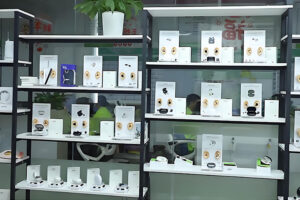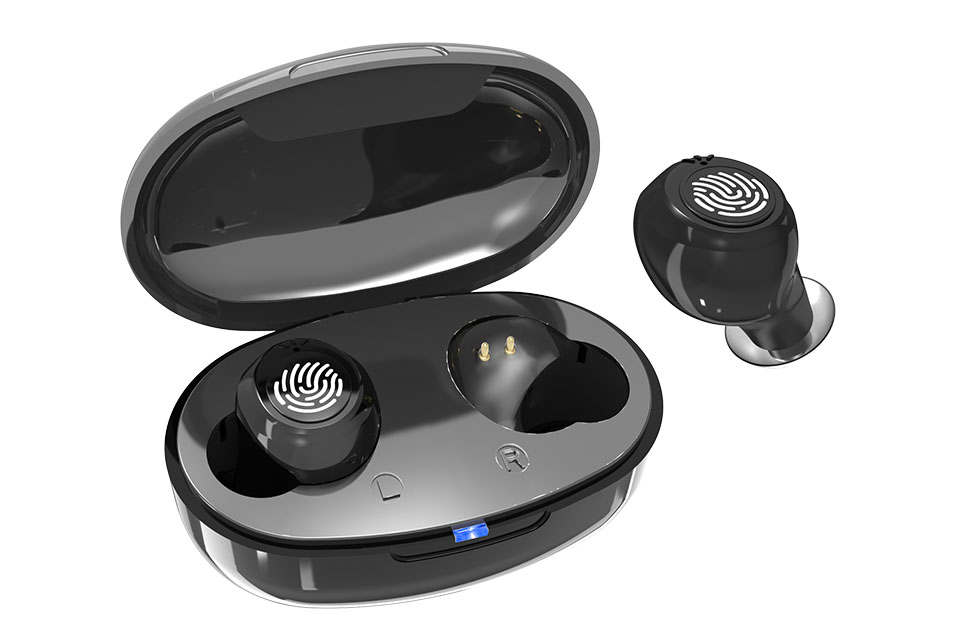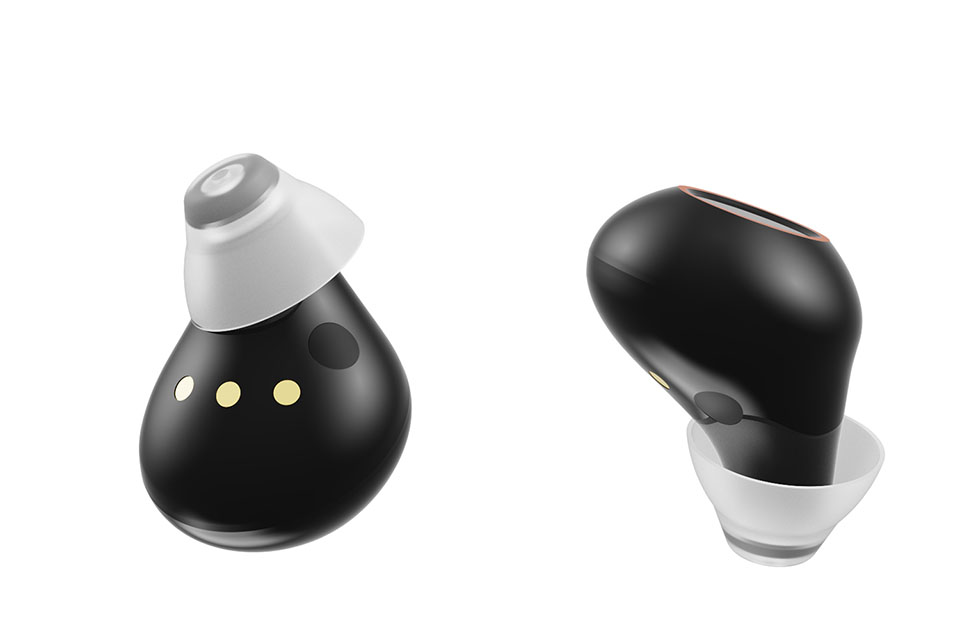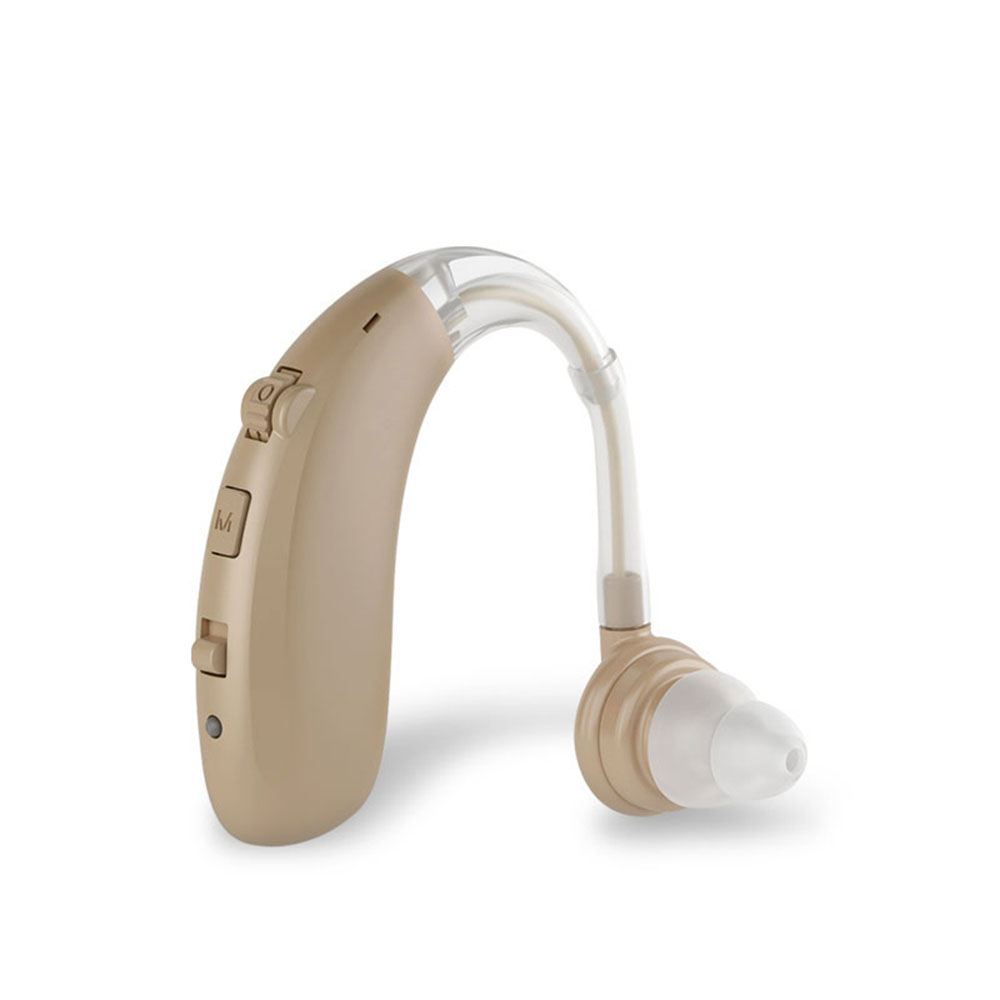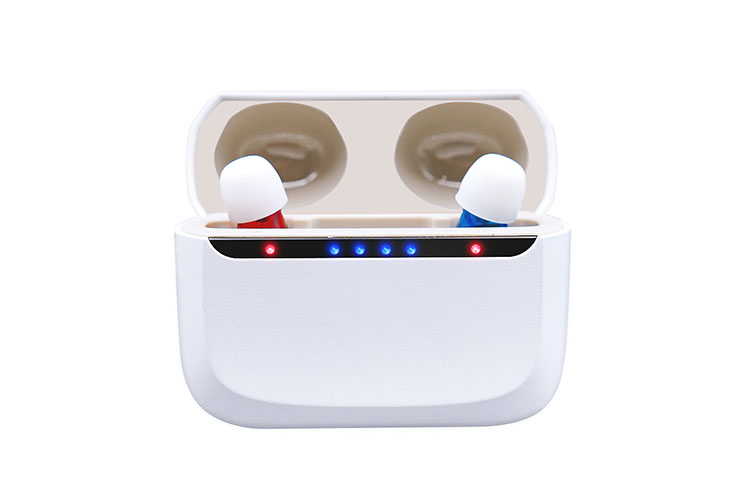Introduction and Scope
Do you want to hear better?
Do you want a hearing aid that is easy to use, looks good, and fits your life?
You are not alone. Many people want the same thing.
But which is better for you: RIC or BTE?
- RIC means Receiver-in-Canal.
- BTE means Behind-the-Ear.
Both are popular. Both help people hear. But they are different.
This guide will help you choose.
We will look at:
- How they work
- Who they fit best
- How they feel and look
- How they perform
- How much they cost
- Which is best for you
Our Company is a top China Hearing Aids Factory.
We make over 3 million hearing aids each year.
We use the latest tech: Bluetooth, DSP chips, and more.
We are ISO-certified.
We offer OEM and ODM services.
We help you win in your market.

Technical Overview: RIC vs. BTE Hearing Aids
What is a RIC hearing aid?
- The main part sits behind your ear.
- A thin wire goes into your ear canal.
- The speaker (receiver) is in your ear canal.
- It is small and hard to see.
What is a BTE hearing aid?
- The whole device sits behind your ear.
- A tube goes from the device into your ear.
- The sound comes through the tube.
- It is bigger than a RIC.
Key Differences Table
| Feature | RIC (Receiver-in-Canal) | BTE (Behind-the-Ear) |
|---|---|---|
| Main Part | Behind ear | Behind ear |
| Sound Path | Wire to receiver in canal | Tube to earmold |
| Size | Small, discreet | Larger, more visible |
| Power Range | Mild to severe loss | Mild to profound loss |
| Comfort | Light, open fit | Secure, custom fit |
| Maintenance | More for receiver | More for tubing |
| Tech Features | Bluetooth, AI, App | Bluetooth, AI, App |
Why does this matter?
- RIC is best if you want a small, light, and hidden device.
- BTE is best if you need more power or have special needs.
Want to see more types?
Check Hearing Aid By Types and RIC Hearing Aids.
Customer Demographics and Suitability
Who should use RIC? Who should use BTE?
Let’s look at different people.
Children (Pediatrics)
- BTE is best for young children.
- Ears grow fast. BTEs use soft earmolds that are easy to change.
- BTEs are strong and safe.
- BTEs work with classroom systems.
- Easy for parents to clean and handle.
- Older kids and teens:
- RIC can be used if the child is responsible.
- RIC looks better and may help teens feel more confident.
Adults
- Most adults choose RIC.
- RIC is small and hard to see.
- Feels light and natural.
- Good for mild to severe hearing loss.
- Has the latest tech: Bluetooth, app control, AI.
- Some adults need BTE.
- If you have severe or profound hearing loss.
- If you have trouble with small parts (arthritis, vision problems).
- If you need a strong, easy-to-handle device.
Older Adults (Seniors)
- RIC is popular, but BTE is easier for some.
- BTE is bigger and easier to hold.
- BTE is better if you have trouble with your hands or eyes.
- BTE is good for very strong hearing needs.
Special Needs
- Dexterity problems: BTE is easier to use.
- Cognitive problems: BTE is simple and easy for caregivers.
- Vision problems: BTE is bigger and easier to see and touch.
Summary Table: Who Should Use What?
| User Group | Best Choice | Why? |
|---|---|---|
| Young Children | BTE | Safe, easy to fit, durable |
| Teens | RIC/BTE | RIC for looks, BTE for power |
| Adults | RIC | Discreet, tech, comfort |
| Seniors | RIC/BTE | RIC for looks, BTE for ease |
| Severe Loss | BTE | More power, custom fit |
| Dexterity Issues | BTE | Bigger, easier to handle |
Want to see more?
Check BTE Hearing Aids and In-Ear Hearing Aids.

Evaluation Criteria: Comfort, Aesthetics, and Usability
How do RIC and BTE feel and look?
Comfort
- RIC:
- Light and small.
- Open fit feels natural.
- Less “plugged up” feeling.
- Some people feel the wire or dome in the ear.
- BTE:
- Bigger, but can be more secure.
- Custom earmold can fit well, but may feel full.
- Good for active people who need a secure fit.
Aesthetics
- RIC:
- Hard to see.
- Thin wire blends with skin or hair.
- Many colors to match your style.
- BTE:
- More visible, but new models are smaller.
- Can be hidden by hair.
- Many color choices.
Usability
- RIC:
- Small parts can be hard for some people.
- Rechargeable models are easy—no battery changes.
- App control is simple.
- BTE:
- Bigger buttons and battery doors.
- Easier to clean and handle.
- Good for people with hand or vision problems.
User Reviews Table
| Feature | RIC User Review Highlights | BTE User Review Highlights |
|---|---|---|
| Comfort | “Feels light, almost not there.” | “Secure, but feels full in ear.” |
| Looks | “No one can see it!” | “A bit big, but I don’t mind.” |
| Handling | “Small parts tricky for me.” | “Easy to hold and clean.” |
| With Glasses | “Wire sometimes moves with mask.” | “Can bump with glasses arms.” |
Want more comfort?
See Rechargeable Hearing Aids and Invisible Hearing Aids.
Performance and Technological Advancements
What new tech do RIC and BTE have?
AI and Smart Sound
- Both RIC and BTE use AI to make sound clear.
- AI helps you hear speech in noise.
- AI learns your favorite settings.
Bluetooth and App Control
- Stream music and calls from your phone.
- Control your hearing aid with an app.
- Both RIC and BTE have these features.
Rechargeable Batteries
- No more small batteries.
- Charge once, use all day.
- Both RIC and BTE have rechargeable models.
Health Sensors
- Some models track steps, falls, and more.
- Good for seniors and active users.
Water and Dust Protection
- High IP ratings (like IP68) keep devices safe.
- RIC receivers are still more at risk from earwax and sweat.
Table: Tech Features
| Feature | RIC | BTE |
|---|---|---|
| AI Sound | Yes | Yes |
| Bluetooth | Yes | Yes |
| App Control | Yes | Yes |
| Rechargeable | Yes | Yes |
| Health Sensors | Yes | Yes |
| Water/Dust Safe | Yes | Yes |
Want the latest tech?
See Bluetooth Hearing Aids and Digital Hearing Aids.
Maintenance, Durability, and Cost Considerations
How easy are they to care for? How long do they last? How much do they cost?
Maintenance
- RIC:
- Clean the receiver and dome often.
- Change wax guards.
- Receivers may need to be replaced.
- Use a dryer to keep it safe from moisture.
- BTE:
- Clean the earmold and tube.
- Change tubing every few months.
- Earmolds last 1-2 years.
- Device is less likely to get wet or dirty.
Durability
- RIC:
- Small and light, but the wire and receiver can break.
- More repairs for the receiver.
- BTE:
- Bigger and stronger.
- Less likely to break.
- Good for kids and active people.
Cost
- RIC:
- May cost more at first.
- More repairs for the receiver.
- Rechargeable models cost more but save on batteries.
- BTE:
- May cost less at first.
- Tubing and earmolds are cheap to replace.
- Good for people who want low long-term costs.
Cost Table
| Cost Item | RIC (per year) | BTE (per year) |
|---|---|---|
| Initial Price | Higher | Lower |
| Repairs | More for receiver | Less frequent |
| Batteries | Less if rechargeable | Less if rechargeable |
| Tubing/Earmold | N/A | $10-$200 |
| Wax Guards/Domes | $10-$50 | $10-$50 |
Want to save money?
See Low Cost Rechargeable Hearing Aids Dealers and Inexpensive Rechargeable Hearing Aids Wholesale.
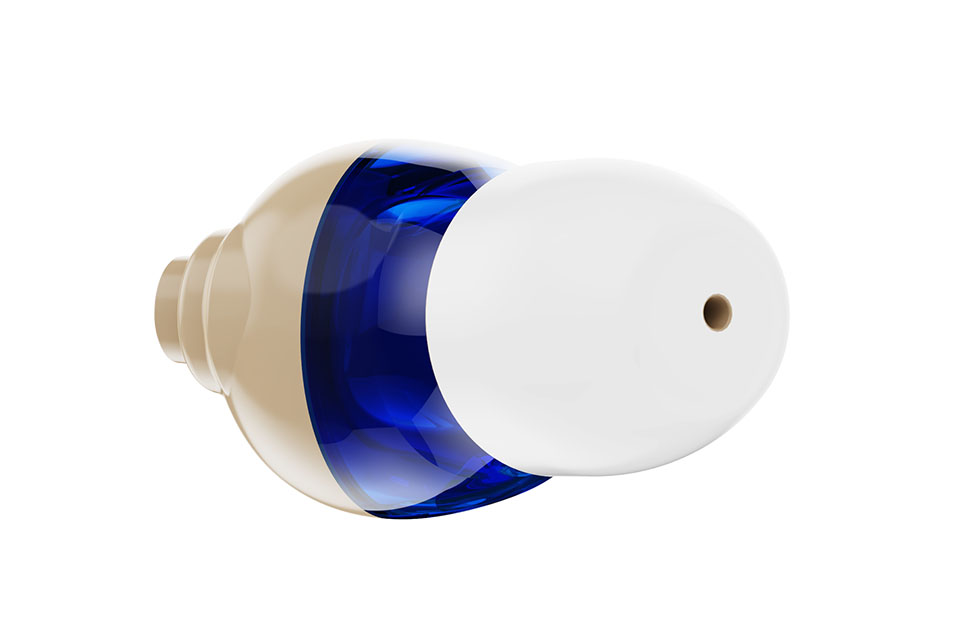
Summary Matrix: Suitability by User Profile
Which is best for you? See the table below.
| User Profile | RIC Best? | BTE Best? | Why? |
|---|---|---|---|
| Young Child | Yes | Safe, easy to fit, durable | |
| Teen | Yes | Yes | RIC for looks, BTE for power |
| Adult, Mild Loss | Yes | Discreet, tech, comfort | |
| Adult, Severe Loss | Yes | More power, custom fit | |
| Senior, Good Hands | Yes | Discreet, tech, comfort | |
| Senior, Poor Hands | Yes | Bigger, easy to handle | |
| Active Lifestyle | Yes | Yes | BTE more robust |
| Need for Tech | Yes | Yes | Both have AI, Bluetooth |
| Need for Simplicity | Yes | BTE is simple, easy |
Want to compare more?
See Hearing Aid By Features and Noise Reduction Hearing Aids.
Conclusions and Recommendations
What should you choose?
- Choose RIC if:
- You want a small, light, and hidden device.
- You have mild to severe hearing loss.
- You want the latest tech: Bluetooth, app, AI.
- You care about looks and comfort.
- Choose BTE if:
- You have severe or profound hearing loss.
- You are a child or need a strong, safe device.
- You have trouble with small parts.
- You want a device that is easy to handle and clean.
Why choose Our Company?
- We make both RIC and BTE hearing aids.
- We use the latest tech: Bluetooth, DSP, AI, rechargeable batteries.
- We are ISO-certified.
- We make 3 million units each year.
- We offer OEM and ODM services.
- We help you win in your market.
- We offer low cost, high quality, and fast delivery.
Ready to order?
See BTE Hearing Aids Exporting Custom and RIC Hearing Aids Supplier.
Internal Links for More Information
- China Hearing Aids Factory
- BTE Hearing Aids
- RIC Hearing Aids
- Rechargeable Hearing Aids
- Digital Hearing Aids
Choose the right hearing aid. Choose the right partner.
Choose Our Company.

